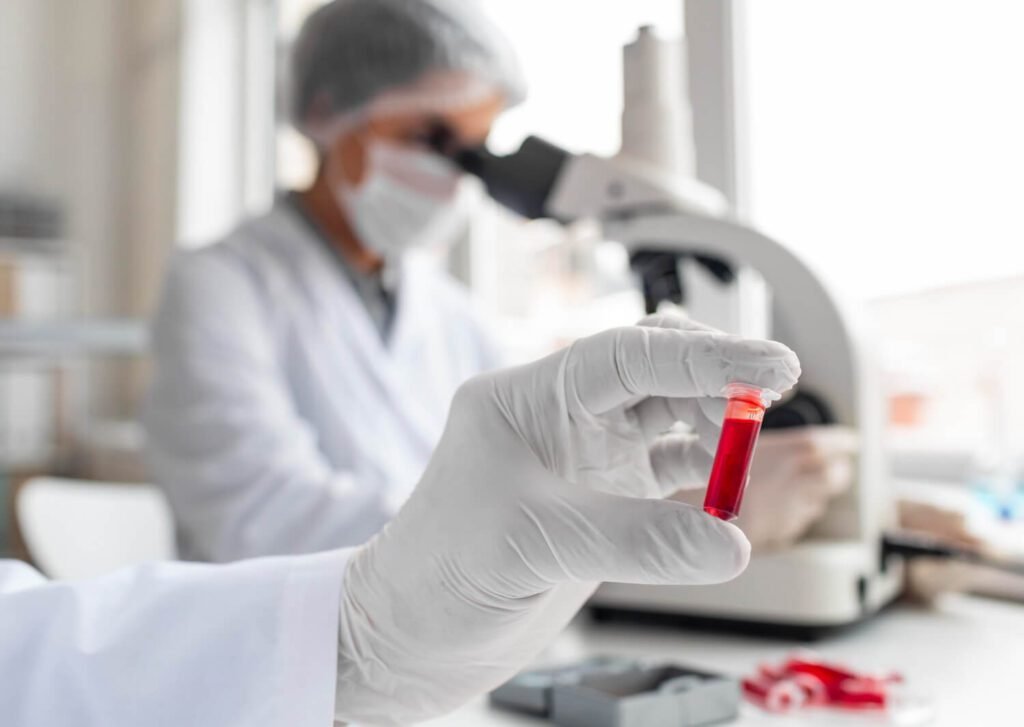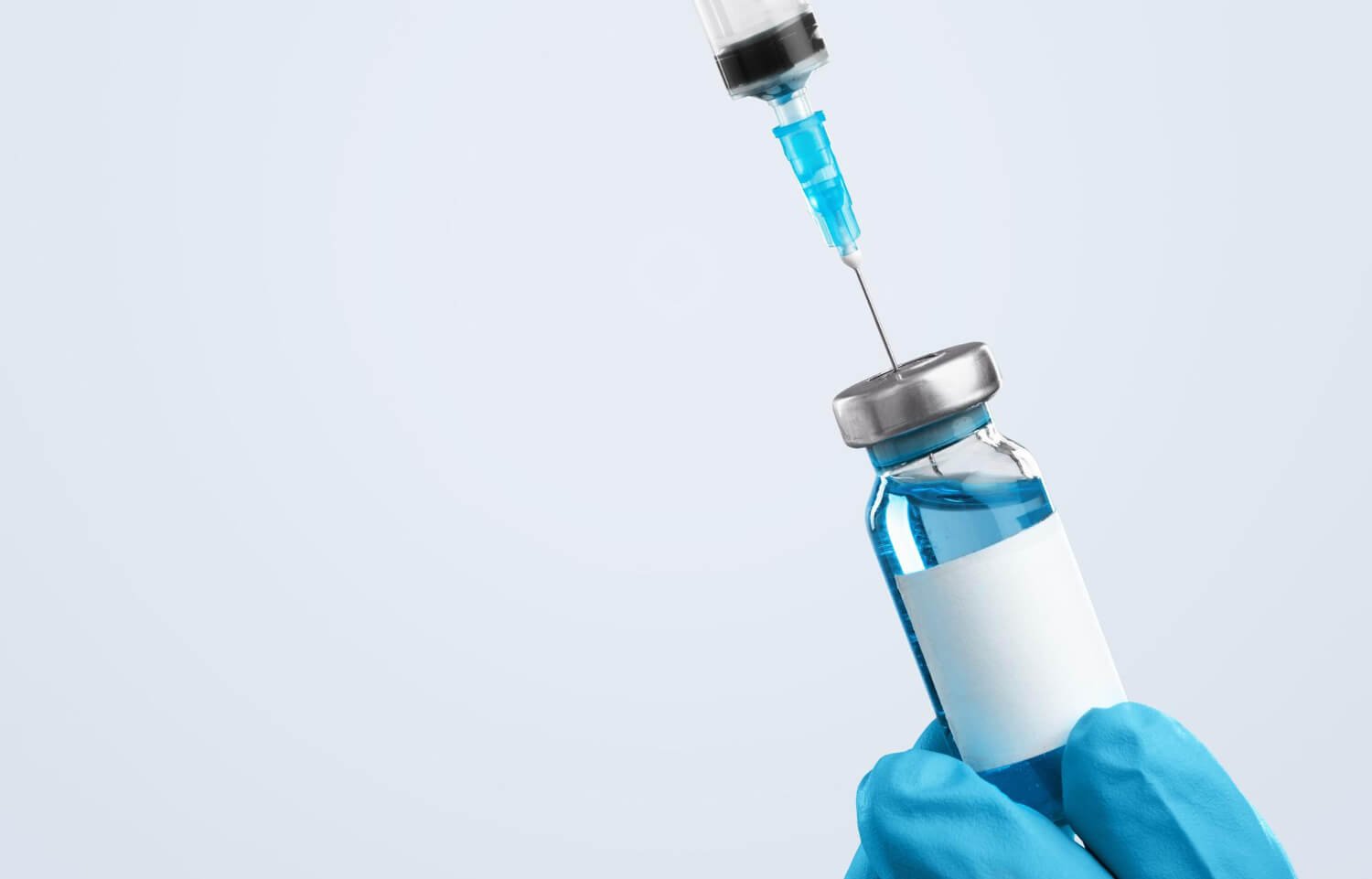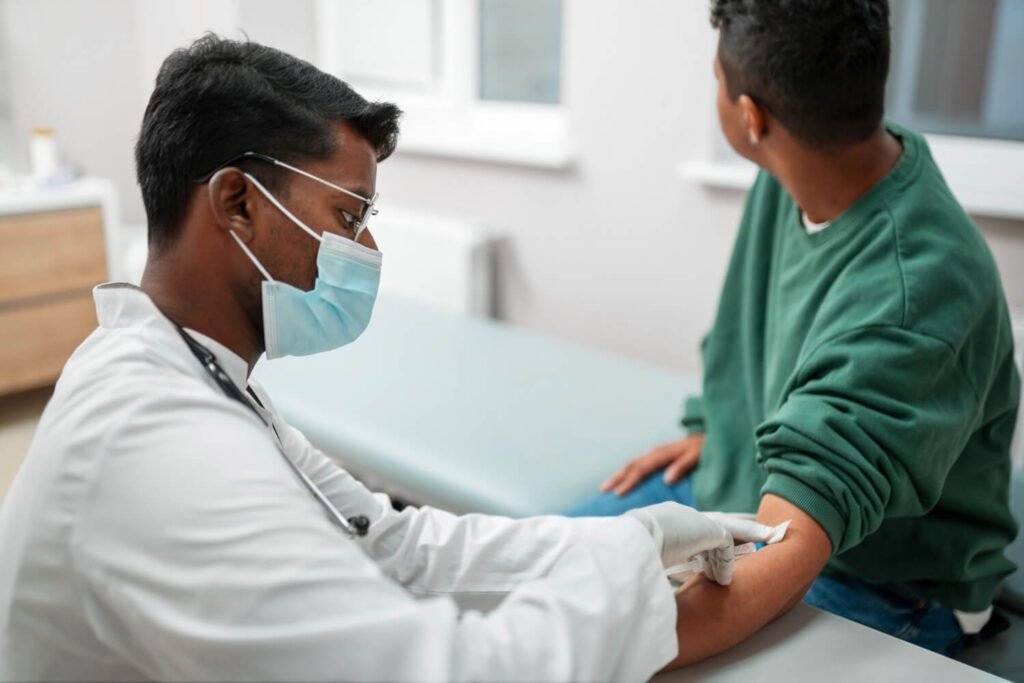March 13, 2025 – Recently, researchers came up with a revolutionary invention known as the Yearly HIV Injection, which, as the name suggests, only needs to be administered once per year. This injection has performed extremely well in clinical testing and has the potential to transform the HIV care system by eliminating the requirement for daily medication and adherence, which patients often struggle with. With the newly introduced HIV Injection, two powerful anti retroviral drugs have been combined into one slow-release form that can effectively prevent HIV infection along with maintaining viral suppression in a patient.
If this injection receives the green light from international authorities, our methods of treating and preventing HIV, especially in underdeveloped countries lacking proper health systems, would be revolutionized.
Innovative Change Towards Better Treatment For HIV
For a long time, the only way to manage HIV was through the implementation of a daily antiretroviral therapy (ART), which helps to stop the virus from spreading further and transforming the individual into an AIDS patient. While ART has proven to be a life saving treatment, the need to take medication each day is a major obstacle for many, including:
• Stigma and Privacy Issues – Daily medications run the risk of exposing an individual to public scrutiny which can lead to ridicule or discrimination which discourages adherence.
• Side Effects – Some ART regimens have side effects like fatigue or nausea, which demotivates the individual from pursuing the treatment further.
• Access Issues – The combination of irregular drug supply alongside expensive treatment costs and barriers to healthcare have made it difficult for the lower income and remote area patients to adhere to daily ART regimens.
With The Yearly HIV Injection comes ease to these patients as it offers a controlled and regulated dose of medication for the entire duration of 12 months which allows for uninterrupted supply of medication, treatment or protection from infection while eliminating the need for everyday actions from the patient.
Dr. Emily Roberts, from the National Institute for Infectious Diseases (NIIID), further discussed the impact of this advancement:
“Long-acting injectables are known to improve adherence and outcomes, which is no secret. But to be able to cover a full year is simply astonishing. All we can think about what this may do in the battle against the HIV epidemic.”
Clinical Trial Success and Efficacy

The multi-phase clinical trial program for The Yearly HIV Injection spanned 5 years and included over 5,000 participants from North America, Europe, South America and parts of sub-Saharan Africa all of which have differing rates of HIV and healthcare access.
Phase 1: Safety and Tolerability
• In this primary phase, which took place in 2020-2021, the goal was to assess safety and tolerability for the Yearly HIV Injection.
• So far, there seems to be no adverse reactions except for some mild side effects at the injection site and muscle soreness afterwards.
• 94% of participants claimed that the convenience of the Yearly HIV Injection was preferable to the daily pills.
Phase 2: Effectiveness in HIV Treatment
• This phase had 2500 participants in it who were living with HIV and were stable on daily ART before.
• After receiving the injection, 98% of participants were able to remain undetected for the full 12 months.
• In under 1% of participants, a viral rebound occurred, but it was managed effectively with other medication adjustments.
Phase 3: Prevention in High-Risk Populations
• This phase sought to assess the injectable preventative efficacy over 2,500 high-risk HIV negative individuals, such as: sex workers, meth users, and gay men.
• The drug proved to lower infection rates by 92%, a significantly higher percent than oral Prep that falls between 44-86%, depending on compliance.
• Even those with erratic access to medical services and unstable socioeconomic conditions received unwavering protection.
“Prevention results from a single intervention reverberating this strongly is something that we have never seen before,” said Dr. Michael Chang, an infectious disease specialist at Johns Hopkins University. “The Yearly HIV Injection has the prospect not just to treat the disease but to prevent infections on a scale that we have never catered for.”
How the Yearly HIV Injection Works

In a single dose, the Yearly HIV Injection contains two primary antiretroviral components locked inside a biodegradable, polymer designed for macromolecular extended release: 1. Cabotegevavir – An integrase strand transfer inhibitor (INSTI) that prevents the HIV enzyme integrase from intermingling with human DNA and multiplying.
2.Rilpivirine – A non-nucleoside reverse transcriptase inhibitor (NNRTI) that opposes the action of the enzyme reverse transcriptase which reproduces HIV.
The antiretroviral components are embedded in a polymer matrix designed to disintegrate within a year, providing and maintaining the target drug levels in circulation for a whole year. The polymer is intended to keep stable drug levels so the patient gets protection or remains virally suppressed but not enough to become resistant to the drugs.
A trained individual will give this injection in the gluteal muscle area. The difference between a pill a day routine and the Yearly HIV Injection is that while the former relies heavily on patients memoirs and discipline, the later allows one to “set-and-forget,” freeing them from the psychological and logistical hindrances of daily treatment.
The Expected Change for HIV Global Epidemic

According to the WHO, new annual infection rates stand at 1.5 million, with cases spanning over 39 million people living with the condition as of 2024. Remaining differences in global ART provisions showcase:
• Only 75% of people living with the disease are provided with the necessary care.
• In low to mid-income economies, there is still a lack of proper drug usage due to increased healthcare accessibility, as well as strong barriers stemming from the healthcare systems.
• A large number of people avoid visiting a practitioner because of bias towards HIV.
With the introduction of the Yearly HIV Injection, health officials believe that a myriad of these obstacles would be tackled:
✅ Improved adherence – A greater long-term outcome is expected due to fewer missed doses.
✅ Reduced stigma – Smaller public interactions with the treatment lowers the medication discrimination.
✅ Expanded access – Global health systems will find it easier to distribute and provide care with simpler treatment regimens.
Grant Susan, the director of Global HIV Alliance, mentioned, “The Yearly HIV Injection has the possibility of transforming HIV management from a daily burden to an annual task. This shift has the potential of making HIV care more affordable and accessible across the globe.”
Global Sponsorship and Approvals
In conjunction with NIIID and WHO, the Pharmaceutical company that developed the Yearly HIV Injection is seeking fast-track approval through the following authorization bodies: \n – The American Food and Drug Association (FDA) \n – European Medicines Agency (EMA) \n – South African Health Products Regulatory Authority (SAHPRA) \n – Japan’s Pharmaceuticals and Medical Devices Agency (PMDA) \n If the Yearly HIV Injection is sanctioned, the manufacturer hopes to serve the market optimistically in 2026. The company guarantees cooperativeness with international health societies to maximize consumption and affordability in developing and transforming economies with high rates of HIV.
Obstacles and Follow-ups
Even with the encouragement, there still are options to consider: \n – Cost and Accessibility: The yearly injection is likely to receive a great amount of resistance due to long acting drugs requiring a greater amount of sponsorship as opposed to pills. Negotiations with governments and other institutions will be vital to making the Yearly HIV Injection widely available. \n – Distribution and Infrastructure: Administering injections in remote areas will require trained healthcare professionals and reliable supply chains.
• Prolonged observation – Drug monitoring will track uncommon adverse effects, resistance to therapy, and effectiveness in everyday settings over time.
Yet, a sliver of hope exists. Dr. Roberts remarks, “This is an extraordinary moment, the combination of effectiveness, ease, and comprehensive coverage makes the Yearly HIV Injection one of the most favourable advancements in HIV treatment that we’ve encountered in decades.”
Public Health Consequences
If implemented on a broad scale, Dr. Roberts’s shares that The Yearly HIV Injection is expected to:
• Lower the global incidence of HIV by 60% within the next ten years.
• Increase both life expectancy and quality of life for millions suffering from HIV.
• Assist the United Nations in achieving its goal of eradicating the HIV epidemic by 2030.
As Grant puts it, “We have the resources to control HIV, now it’s about ensuring that everyone can use them.”

